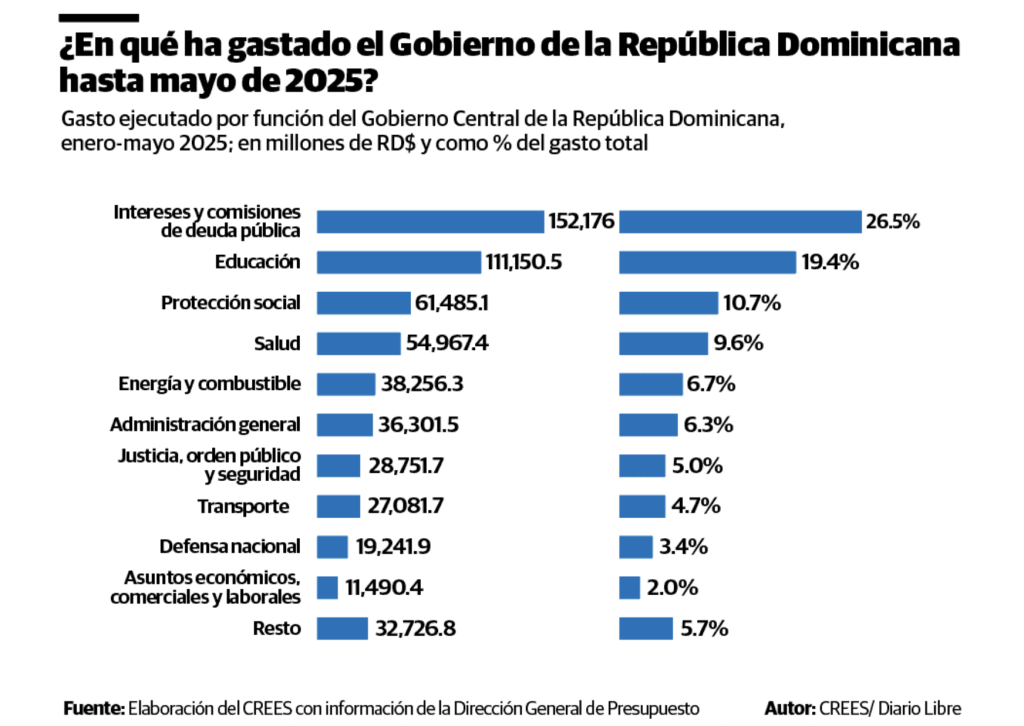
The primary issue plaguing the country’s public finances is excessive spending over revenue.
The charts illustrate the functional classification of expenditures by the Central Government of the Dominican Republic during the first five months of the year. Functional spending provides insight into how the government allocates taxpayer money and the objectives behind its disbursements.
As of 31 May 2025, the Central Government had spent $573,629.4 million pesos, a 4.4% increase compared to the 549,310.5 million pesos spent during the same period in 2024.
More than a quarter, or 26.5% of the total expenditure, went towards debt interest payments. This amounts to 152,176 million pesos, including a budgeted transfer of 35,008 million pesos to the Central Bank of the Dominican Republic. The remainder consists of debt interest and commissions.
The second largest expenditure category was education. Early childhood, primary, and secondary education accounted for 54% of the 111,150 million pesos recorded for this sector. The remaining funds were allocated to other expenses within the education function.
Education and debt interest payments represent the bulk of public expenditure, reports Miguel Collado Di Franco, chief economist at the Center for (Crees), in a report published in Diario Libre. For the current year, debt interest has a budget of RD$333.48 billion, while education has an allocation of RD$309.6 billion pesos. Together, these two categories account for 43% of the Central Government’s entire expenditure budget.
Next on the list are welfare programs, with RD$61.48 billion, health services RD$54.96 billion and energy and fuel with RD$38.25 billion. But the current expenditures in government (including the bloated payrolls) consume a whopping RD$36.3 billion a month.
Collado explains that the main problem with the country’s public finances is that spending consistently exceeds revenue. He writes that governments that fail to effectively manage revenue often resort to public debt, which he explains can be seen as a form of fiscal illusion.
“This means that while taxes aren’t increased, debt rises, representing money that will have to be repaid in the future,” he writes. He highlights that in the first five months of this year, taxpayers paid the equivalent of RD$2.49 billion solely in interest on this debt, nearly RD$2.5 billion due to expenditures exceeding income.
Collado highlights that only 5% of the total expenditure is crucial services of justice, public order, and security.
Collado writes that the Dominican government should strive to spend less than it earns. He says this can only be achieved by developing budgets that reduce expenditure.
Read more in Spanish:
Diario Libre
7 July 2025

